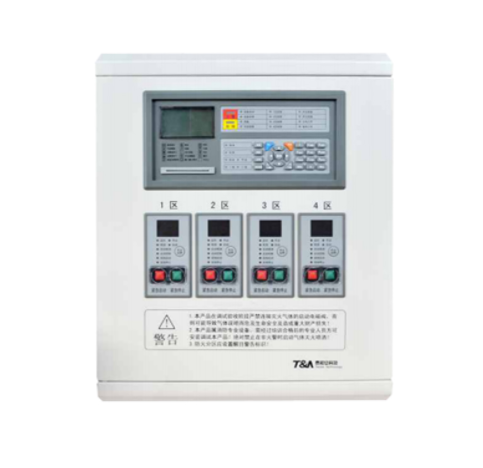Copyright © 2021 TANDA Development Pte. Ltd. All rights reserved.Privacy Policy.Site MapDesigned by

Traditional fire extinguishing systems are designed for common business and home settings.
Water, on the other hand, can be just as damaging to sophisticated electrical equipment and systems as fire or smoke.
Furthermore, instead of dousing the fire, it may cause it to proliferate. This is where a gas extinguishing system can help.
A gas extinguishing system should be implemented in critical operating rooms such as computer servers, server rooms, nuclear plants, electrical closets, museums, delicate storage facilities, and so on.
Gaseous extinguishing agents are employed in this approach to reduce the amount of damage produced by the fire.

A gas extinguishing system is just a fire suppressor that does not use water and instead uses a gas mixture to inhibit or extinguish a fire.
It emphasizes the idea of removing the contributing factors to fire initiation and spread.
The triangle of fire is made up of basically three elements: oxygen, fuel, and heat; removing either of these will put out the fire.
With the use of inert gases like argon and xenon, the oxygen content is decreased to 15% by weight.
When the level of oxygen falls below 15%, combustion no longer seems to have sufficient agents to support itself, and nearly all the substances stop burning.
As immediately as the gases are released, they combine with the air. The resulting mixture does have a significantly higher capacity of heat than air.
As a result, it receives more heat, leading to the disruption of the fire chain reaction.
A carbon and oxygen-containing fluorinated ketone.
A combination of nitrogen, argon, and carbon dioxide (CO2).
A compound of hydrofluorocarbon (HFC) which contains a chemical combination of hydrogen, fluorine, and carbon.
The right gas extinguishing system must be chosen based on the intended use and is time-consuming. It is suggested that you seek advice from a reputable supplier
A good fire extinguisher would not only put out the fire, but it also minimizes the damage incurred by the spontaneous combustion.
It also reduces the amount of harm caused by smoke.
Using a traditional sprinkling concept to put out an electrical fire can be complicated and dangerous due to the inability of the suppression system to conduct electricity properly.
Therefore, gas extinguishing is the greatest option for putting out fires caused by electricity.
Aside from fire, lingering water and smoke from typical fire extinguishers can inflict just as much harm.
The gas suppression system leaves no residue, making cleanup considerably easier after a fire has been extinguished.
The method can be operated even without evacuation of the room. Therefore, a quick action can be done while safeguarding any causality.
The standard fire extinguishers do use water as a fire extinguisher reagent, Unlike gas extinguishing systems which uses a variety of gasses to combat fire.
As a result, it serves as a long-term firefighting strategy.

Whenever it comes to protecting important portions of the building, gas extinguishing systems are quite effective.
It reduces the amount of damage as well as the amount of cleanup necessary, allowing you to get back to business quickly.
Do contact us for more information about gas extinguishing systems.